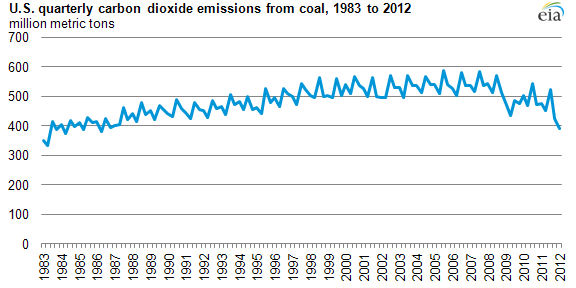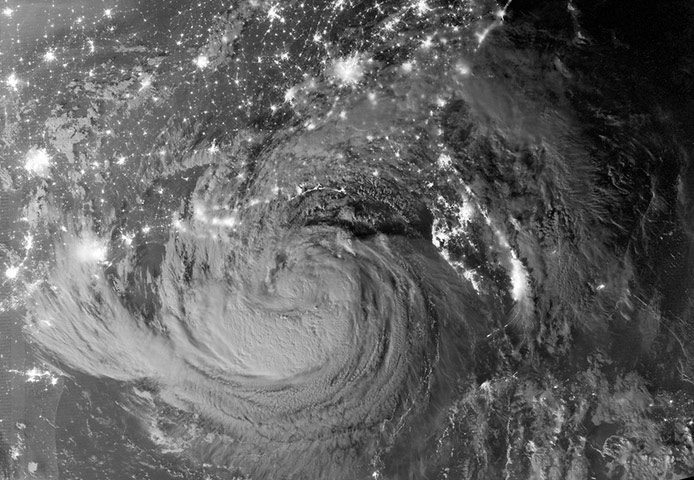
Image from Popular Mechanics of the Chevy Volt hybrid drivetrain. Link to the article here.
We were talking about electric vehicles in class. We'll talk more later when we get to the section of the course that describes new energy technologies, but for right now, I wanted to put up a quick guide, if only because I read reviews of the new Tesla Model S and its highway charging protocol in the New York Times this morning.
There are basically three leading potential formats to overcome the "range anxiety" problem with new electric vehicles.
(Range anxiety is the feeling the driver gets when the batteries are getting low, and a charging station is nowhere to be found.)
The leading contender is the gas-electric or "plug-in" hybrid format, in which an engine is used, either to drive the wheels once the batteries are low, as in the so-called "plug-in" Toyota Prius model, or to charge the batteries, as in the Chevrolet Volt.
The next most likely candidate is the fusion of high-end batteries that get longer range with rapid charging stations strategically placed at highway stopping areas. The best example of this is the Tesla sedan or "Model S." The car has a good long range when fully charged, and the rapid recharging stations can get you back to 80 or 90% in the time it takes to order and eat lunch. Tesla provides the charging service for free, so it's as if you bought a car and got free fuel-for-life. Of course, the initial purchase of the car is very expensive -- way too expensive to be practical for most ordinary people -- but economies of scale should kick in as the car becomes popular among the wealthy.
Finally, and not yet available in the US, there is battery standardization-and-swap. This is the format used by Israeli-America joint venture "Better Place." Most essentially, spare quick-changeable batteries are kept charged and available at ordinary gas stations and other nodes around the country, and the driver can just pick one up when they need one.
Walk the Talk?
Students often ask me what I would do, which car or format I would purchase or drive, which is a fair question, especially since you don't see me driving an electric or hybrid vehicle to campus and back.
I should provide a good example, shouldn't I, if I want to be taken seriously as a leader and mentor?
I'm not particularly unique, but my mechanical and engineering skill does provide me with a wider range of options. As a result, I tend to spend a lot less on transportation than most middle-class professionals my age. I can use vehicles that ordinary people would probably just scrap and keep them running for much longer, without significant increases in carbon emissions, and with very significant decreases in lifecycle costs.
This isn't just hubris or blowing smoke. It's math. You can calculate the life-cycle emissions per mile, just as you can calculate the life cycle costs per mile, and a well-maintained or well-restored vehicle that gets a second or third useful life might easily exceed a brand-new hybrid in lower life-cycle emissions per mile (especially if the hybrid gets only one "life").
The greatest part of any vehicle's climate emissions comes from fuel. So, for a regular gasoline or diesel vehicle, life-time fuel purchases may account as much as 70 or 80% of the emissions. The remainder is production emissions, which are given out at power plants, refineries, plastic factories, steel mills and aluminum plants, and of course at the vehicular assembly plants themselves, while the vehicle is being manufactured.
This remaining 20 or 30% emissions from manufacturing means that if you can make a vehicle last longer than the average, you can reduce total life-cycle emissions considerably. So, while people without mechanical skills who want to reduce emissions should probably buy a hybrid or all-electric car, a good mechanic that maintains her own regular gasoline or diesel vehicles well and makes them last longer is also saving carbon emissions (as well as her own money).
(I like to think that I do this myself because charity and the Keynesian Multiplier begins at home, although our college President might see this as an example of the traditional Yankee "industrial strength stoicism.")
Mechanics using this strategy will, however, add nitrous oxide and sulfur dioxide -- acid rain emissions -- because once a vehicle's engine has exceeded 20,000 or 30,000 miles, these emissions increase sharply.
You can combine this fact of decreased life-cycle emissions with an interest in vehicle technology and happily save emissions and money by working on your own cars.
I do have an interest in hybrid technology, though, and would love to get my hands on an older Prius or Volt at some time, to take apart either by myself or with students, mostly to see how it works, but also to restore and perhaps to tinker with increased range. Prices of second-hand Prii (plural Prius?) are dropping down to where this might begin to be affordable, although I think we may need to wait five years to get our hands on a Volt. And there are quite a few students that might be interested in the project.
In general, I like to encourage students to learn to build and fix things for themselves. For students in SEM, this is a good way to learn more intimately how different kinds of technology work. For students in Sustainable Agriculture, this is good training for repairing and maintaining farm equipment. In the past at Unity College, we encouraged students to own and run grease cars (a kind of biofuel vehicle) by sponsoring a student Grease Car Club, and although these wonderfully fish-and-chip-smelly transports are somewhat out-of-fashion, they still work, and make for interesting projects.
For right now, though, It's Sunday morning and I have to go fix the noisy muffler on the Womerlippi's ancient '97 Ford Escort five-speed (35 mpg, 170,000 miles), then I have to go finish the installation of our new super-efficient on-demand hot water heater.
I've been looking forward to these jobs all week.
Both will save emissions.
But guess which unit, the Ford car or the water heater, cost the most money.
Then guess which one will reduce the most emissions over its lifetime.
Or better yet, crunch the numbers and tell me.














